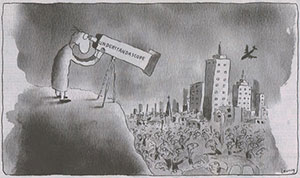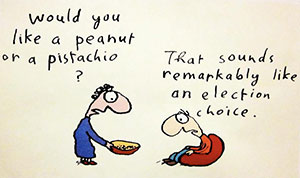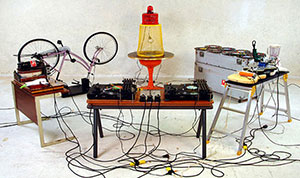or End Compulsory Voting
With elections designed theoretically to reflect the will and voice of the people, this reform would allow dissatisfied and disengaged citizens to be heard while creating a clear distinction with inadvertent informal votes.
The “none of the above” reform is potentially the most speculated upon while being very lightly researched or trialled so its practical impacts are little known (acknowledging the Australian Greens use this in their pre-selection process). It is suggested that the presence of an option which lets a voter disengage entirely would serve as a limiter to highly adversarial behaviour as neither party would seek to shrink the pool of available votes with its attendant funding impact. This is sometimes viewed as a ‘halfway step’ to non-compulsory voting as it reduces the compulsion on voting to one of attendance at a polling place.
The logical extension of this position is to end the legal compulsion to vote, which itself is exceptional among Western democracies. Interestingly, the compulsory vote was introduced as on the initiative of a backbench Tasmanian senator from the Nationalists, Herbert Payne, who introduced a Private Senator’s Bill (Commonwealth Electoral Act 1924), on 16 July 1924. There was less than an hour of debate in the House of Representatives and no votes were recorded against the bill. It had not been part of the electoral campaign or policy platform of either the Government or Opposition at the prior election, yet has been viewed by many as immutable. As well as the genuine concern about voter turnout at the 1922 Federal Election (dipping below 60%), the rationale for its introduction had been espoused as leading to a rise in better informed political debate and heightened voter engagement.
Advantages of these Reforms
The key advantage put forth by advocates of these reforms is that the vote will become a more accurate reflection of the will of the engaged element of the community, and that elections decided by those completing a ballot to avoid a fine is a flaw to be corrected.
Arguments Against these Reforms
“If you have a ‘None of the Above’ no one will vote for anyone.”
Until it’s trialled, we don’t know the impact. In terms of lost votes, it is worth considering that in the 2010 Australian Federal Election nearly 20% of voting age citizens did not cast a valid vote (1.2m not enrolled, 900,000 did not turn up to polls, and 618,000 voted informally). So citizens appear to be taking this option regardless.
“Compulsory voting is the cornerstone of our democracy – you can’t tinker with that.”
Above and beyond the statistics above, it is worth considering that only the following countries outside Australia enforce a compulsory vote: Argentina, Brazil, Chile, Democratic Republic of Congo, Ecuador, Fiji, Liechtenstein, Nauru, Peru, Singapore and Uruguay. This illustrates that this compulsion is absent from most of the world’s 123 democracies (as adjudged by Freedom House). Another aspect to consider is that voting itself is an 18th century construct designed by the framers of the US Constitution to preserve natural aristocracy and minimise the involvement of the masses (this design then being imitated by others –for more detail consult the Manin reference below). McDonald and Budge have explored the issues of ‘absence of mandate’ this has led to in the modern era.
“This is so the Right can stop poor people voting.”
It is commonly suggested that those who choose not to vote will disproportionately come from disadvantaged populations and lower socio-economic groups, thus a reform of this nature serves to deprive them of a voice. This is potentially true, however, the only firmly known variable today is that those choosing not to vote are overwhelmingly delineated by age rather than income – the AEC estimates only 1 in 2 18y.o.s are enrolled to vote.
Background and Origins
Numerous sources have canvassed the idea of a ‘None of the Above’ and we have not identified a single definitive source.
Questions for Further Study
The key research question within Australia is to explore who the 2.7m non-voters are (by demographics), and to acquire an understanding of their reasons for doing so.
What You Can Do
The Foundation is seeking Masters and PhD students who are considering this as a potential area of study. Please contact leaders ![]()
Clarifications
None yet requested.
Further Readings
- McDonald, M. and Budge, I. Elections, Parties, Democracy Oxford University Press, 2005. Buy it online (Free Shipping Worldwide)
- Manin, B. The Principles of Representative Government Cambridge University Press, 1997. Buy it online (Free Shipping Worldwide)
- Peter Brent, ANU writes in The Conversation about our electoral history http://theconversation.edu.au/the-secret-life-of-the-election-3076
- Australian Electoral Commission: Compulsory Voting http://www.aec.gov.au/Voting/Compulsory_Voting.htm & http://www.aec.gov.au/About_AEC/Publications/voting/files/compulsory-voting.pdf
- Parliament of Australia: March 2008 Research Brief Compulsory Voting in Australian National Elections http://www.aph.gov.au/library/pubs/rb/2005-06/06rb06.pdf
 Image credit: Michael Leunig “Understandascope” 2010
Image credit: Michael Leunig “Understandascope” 2010




